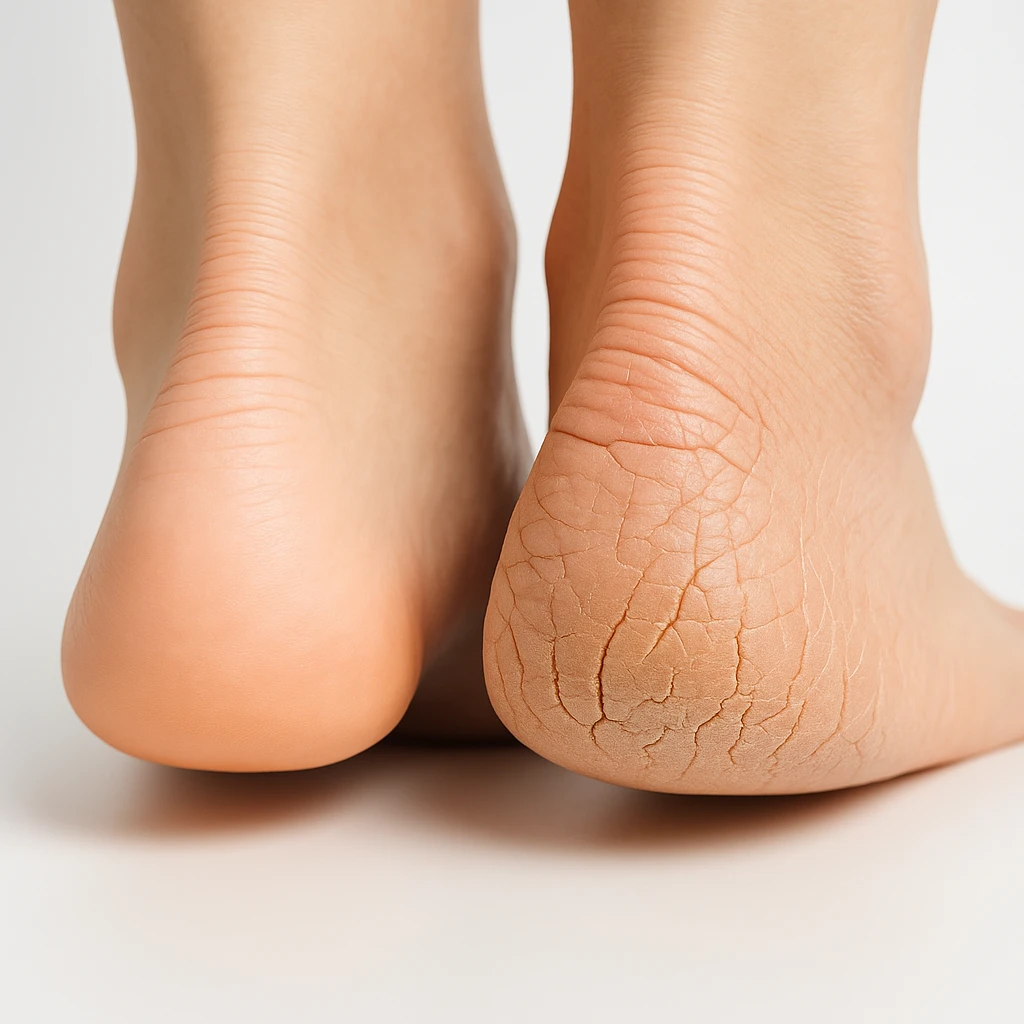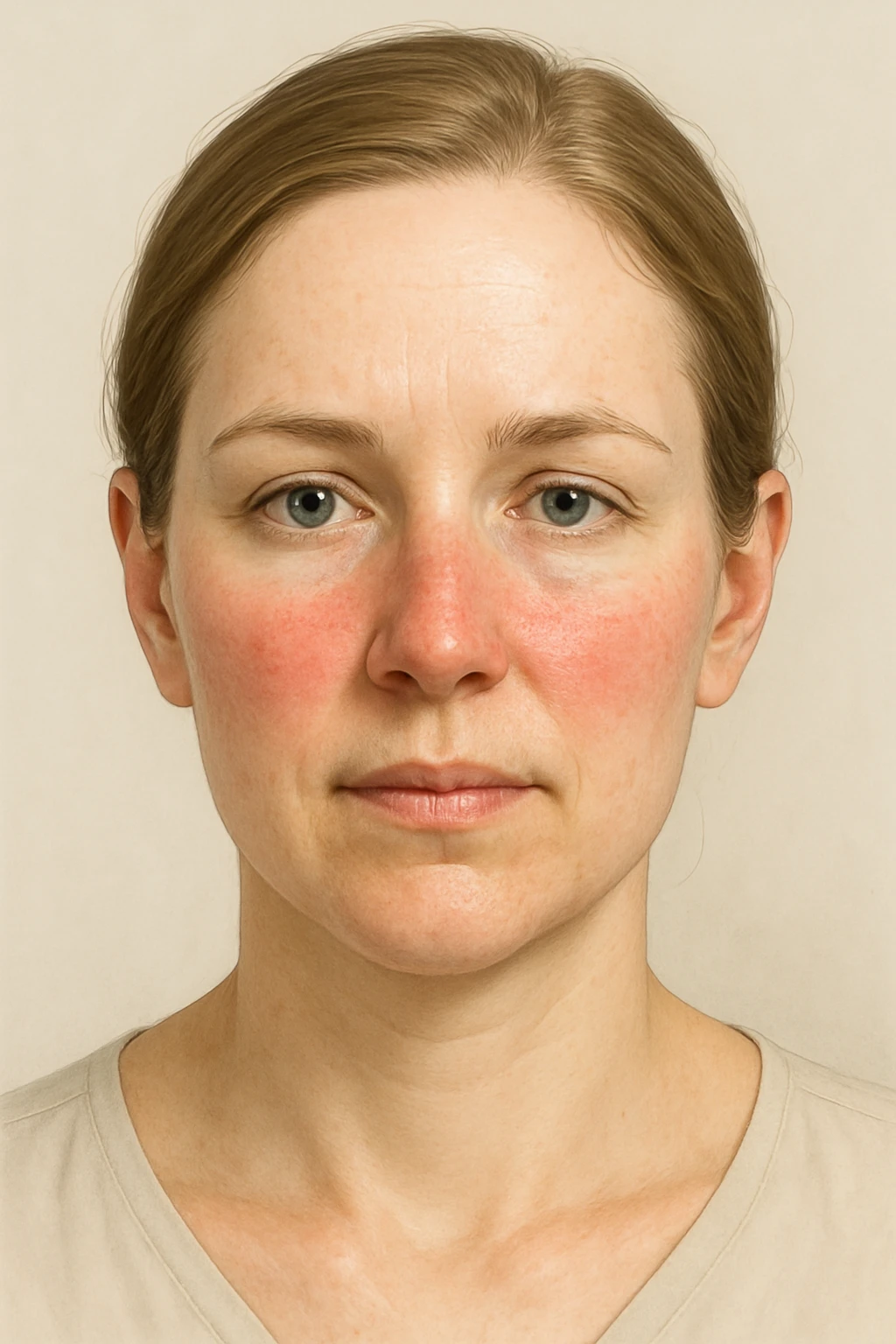Sensitive Skin – Top 20 Common Questions
1) What counts as “sensitive skin,” really?
When folks say “my skin is sensitive,” they usually mean products make it sting, burn, itch, turn red, or feel tight. Derms look for concrete signs: tiny bumps or pustules, flushing, obvious redness, surface erosion, or skin that’s so dry the barrier can’t protect nerve endings. If that sounds like you, a sensitive skin routine is your lane.
2) How do I know if I actually have it?
Easiest route: book a pro and let a derm take a look (search “dermatologist near me” if you’re in a big state like California or Texas). Track patterns, too—if new lotions or cleansers regularly give you burning or blotches, that’s a clue. Photos help: snap a pic before/after a product so you’ve got receipts.
3) What sparks sensitive-skin blowups?
A few usual suspects:
- Skin conditions like eczema, rosacea, or allergic contact dermatitis
- A busted moisture barrier from over-washing, over-exfoliating, or harsh “deodorant” soaps
- Weather swings (NY winters, AZ heat, windy Midwest days), hot showers, or sun/wind burn
- Fragrance, dyes, and certain preservatives
Genetics, age, and skin tone may tilt the odds, but triggers are super personal.
4) Is there a medical test for sensitive skin?
There’s no single “you have sensitive skin” lab test. Derms often use patch testing to hunt down allergy culprits behind rashes or burning (think nickel, fragrance mixes, certain botanicals). At home, you can “patch test” new products on the inner arm or behind an ear for 48–72 hours before it ever touches your face.
5) Should guys care about this, or nah?
Absolutely. Irritation doesn’t care about gender. Shaving can rough up the barrier, so switch to a cushy, low-fragrance gel and an alcohol-free splash afterward. Keep it simple with hypoallergenic skincare—fewer fragrances, fewer problems—especially if your neck or jawline gets razor burn.
6) Face-care tips that don’t backfire
Cleansing: Skip heavily scented or “deodorant” bar soaps on your face. Reach for a soap-free gel/cream that markets itself as the best cleanser for sensitive skin (fragrance-free, dye-free, low-foam). Lukewarm water only; pat dry—don’t scrub.
Moisturizing: Lock it in with a fragrance-free moisturizer that packs ceramides, glycerin, or hyaluronic acid. Apply to slightly damp skin to trap water. Keep actives (retinoids/acids) minimal or buffered with moisturizer.
Pro tip: Streamline. Too many layers = more chances to react. Start with cleanser + moisturizer + sunscreen, add one new product at a time, and keep notes so you know what truly loves your skin.
7) What should I look for so products don’t roast my sensitive skin?
Think “short and sweet.” Fewer ingredients = fewer landmines. Aim for hypoallergenic skincare that’s fragrance-free, dye-free, and alcohol-free. Scan labels for barrier buddies like ceramides, glycerin, squalane, and oat. If a product brag-splashes a dozen acids and botanicals, hard pass. Skip antibacterial/deodorant add-ins, harsh astringents, and go easy with strong retinoids or high-percent AHAs until your barrier is solid. Daily must-haves: a gentle cleanser and a fragrance-free moisturizer, plus a mineral sunscreen (zinc/titanium) if you’re the reactive type.
8) Which makeup plays nice with reactive skin?
Keep it minimal and boring—in a good way. Powders usually have fewer preservatives, and a silicone-based foundation can glide on without kicking up irritation. Choose non-comedogenic makeup, black mascara/eyeliner (often least allergenic), and stick or pencil liners over liquids (some liquids can contain latex). Skip waterproof formulas unless you truly need them—they require tougher removers your skin may not love. And toss old makeup on the regular; if you can’t remember when you opened it, it’s auditioning for the trash.
9) How do I test new stuff without face-planting into a rash?
Do a patient, old-school patch test:
- Night 1–3: dab a pea-size behind one ear; leave on.
- If calm, Night 4–6: try along the jawline/temple.
- Still chill? Roll it onto your whole face, every other night at first.
Only add one new product per week so you can blame the right culprit if things go sideways.
10) Seasonal playbook: winter vs. summer
All year: Wear a broad-spectrum SPF (the best sunscreen for sensitive skin is often mineral) on face/neck/hands. Reapply about every 2 hours outdoors and after swimming/sweating.
Winter (hello, Colorado heaters & NYC wind):
- Don’t crank the thermostat; dry air shreds barriers.
- Short, lukewarm showers; swap in a soap-free cleanser.
- Pat dry and moisturize within 60 seconds—look for ceramides, dimethicone, petrolatum, mineral oil, or glycerin.
- Humidifier on your nightstand = skin’s bestie.
Summer (Texas sun, Florida humidity):
- Shade, hats, UPF clothing, sunnies—treat them like accessories with benefits.
- Apply SPF 15–30 minutes before heading out; reapply generously.
- Remember water, snow, and sand bounce UV right back at you—double down by reapplying more often at the beach or lake.
- Tanning (indoor or out) is just damage with good lighting—skip it.
11) What should I look for in a sunscreen to protect my sensitive skin?
Go mineral, not chemical. Choose a broad-spectrum SPF 30+ with only zinc oxide and/or titanium dioxide. Look for “fragrance-free,” “non-comedogenic,” and gentle textures if you’re shopping sunscreen for sensitive skin. Mineral filters deflect UV instead of absorbing it, which is friendlier to reactive skin.
12) When and how do doctors diagnose and treat sensitive skin?
Derms first rule out look-alikes (eczema, rosacea, contact dermatitis) and may do a patch test. Treatment usually means trimming your routine to hypoallergenic skincare basics: a mild cleanser, a fragrance-free moisturizer, and a mineral sunscreen SPF 30+. They’ll also flag household triggers (detergents, fragrances) and suggest barrier-repair moves.
13) Which clothing fabrics are less irritating to sensitive skin?
Keep it soft and simple: fine cotton (cool), silk (warm), plus rayon or linen if you like airflow. Go looser fits, minimal seams, and ditch scratchy tags—less friction, fewer flare-ups.
14) What diseases and conditions may be associated with sensitive skin?
Sensitive skin often rides with acne, psoriasis, contact dermatitis, rosacea, and eczema. Calming the root condition usually tones down burning, stinging, and redness.
15) Does the FDA regulate the safety of cosmetics?
Yes—but not like prescriptions. The FDA can inspect facilities and act if products are:
- Unsafe
- Misbranded or improperly labeled
- Adulterated
There’s no routine pre-approval, so label reading still matters—especially if you need genuinely fragrance-free or alcohol-free picks.
16) Are products labeled “hypoallergenic” safer for sensitive skin?
Not automatically. “Hypoallergenic” isn’t a strict legal standard. Treat it as a hint, not a guarantee. Prioritize short ingredient lists, patch test first, and pair a fragrance-free moisturizer with a mineral sunscreen if you’re extra reactive.
17) How can I tell if a skin care or household product might irritate me?
Scan the INCI for usual culprits: added fragrance/parfum, strong alcohols, high-dose acids/retinoids. Do a two-step patch test (behind ear two nights, then jawline). Add only one new product per week so you can spot the troublemaker fast.
18) Can eating better help sensitive skin?
Yep. A steady plate with omega-3s, colorful produce, and enough protein supports your barrier. Hydration helps, too—dehydrated skin throws tantrums.
19) Can a child outgrow sensitive-skin conditions?
Often. Many kids ease out of eczema by early school years, and most people see acne improve by their late 20s/30s. Psoriasis is typically long-term but manageable with a good plan.
20) Can sensitive skin be inherited?
The tendency can run in families—acne, eczema, psoriasis, and rosacea all have genetic ties. But reacting to a specific cleanser or detergent isn’t “destiny”; smart hypoallergenic skincare and avoiding triggers still make a big difference.












